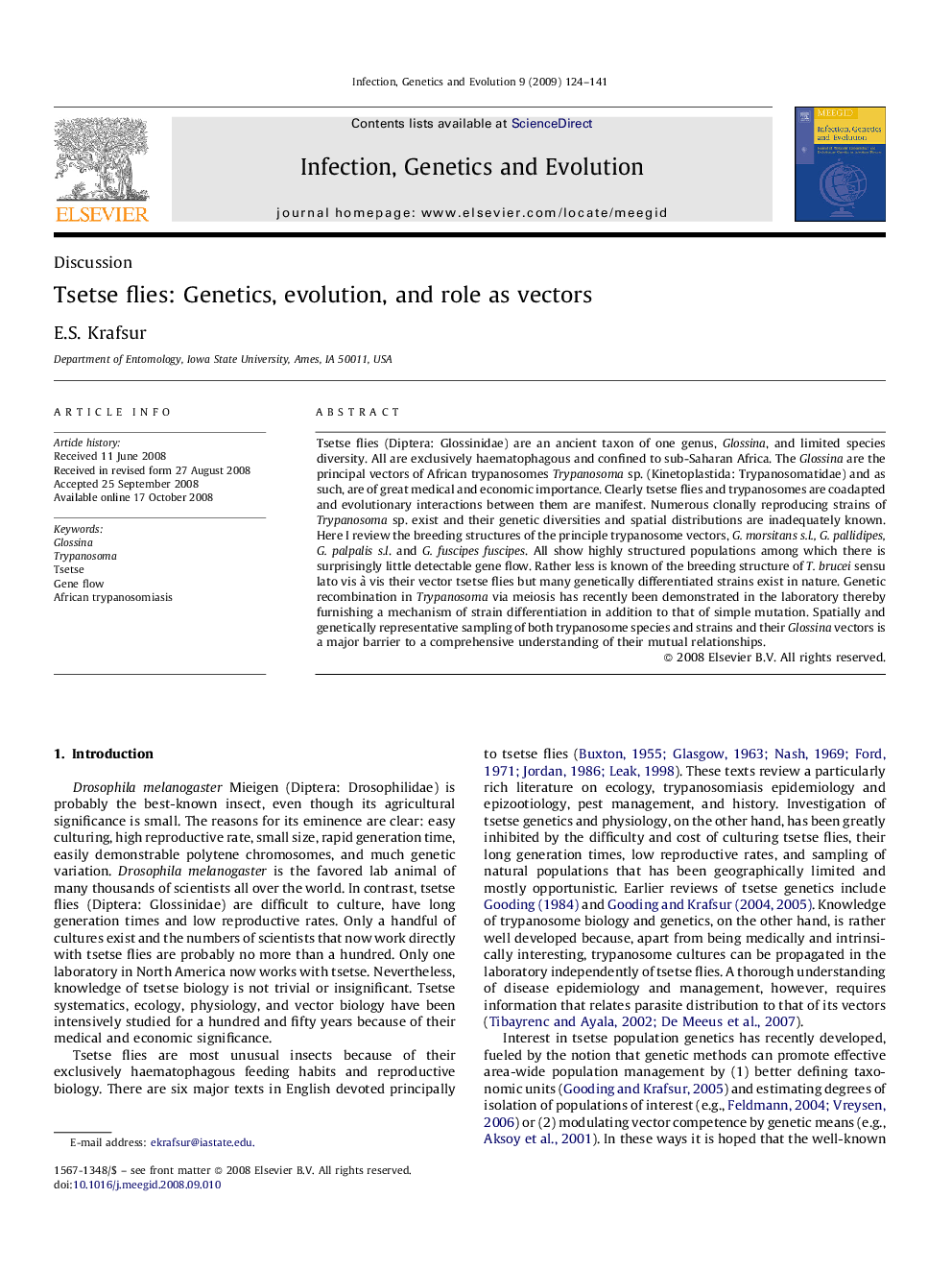| Article ID | Journal | Published Year | Pages | File Type |
|---|---|---|---|---|
| 2823468 | Infection, Genetics and Evolution | 2009 | 18 Pages |
Tsetse flies (Diptera: Glossinidae) are an ancient taxon of one genus, Glossina, and limited species diversity. All are exclusively haematophagous and confined to sub-Saharan Africa. The Glossina are the principal vectors of African trypanosomes Trypanosoma sp. (Kinetoplastida: Trypanosomatidae) and as such, are of great medical and economic importance. Clearly tsetse flies and trypanosomes are coadapted and evolutionary interactions between them are manifest. Numerous clonally reproducing strains of Trypanosoma sp. exist and their genetic diversities and spatial distributions are inadequately known. Here I review the breeding structures of the principle trypanosome vectors, G. morsitans s.l., G. pallidipes, G. palpalis s.l. and G. fuscipes fuscipes. All show highly structured populations among which there is surprisingly little detectable gene flow. Rather less is known of the breeding structure of T. brucei sensu lato vis à vis their vector tsetse flies but many genetically differentiated strains exist in nature. Genetic recombination in Trypanosoma via meiosis has recently been demonstrated in the laboratory thereby furnishing a mechanism of strain differentiation in addition to that of simple mutation. Spatially and genetically representative sampling of both trypanosome species and strains and their Glossina vectors is a major barrier to a comprehensive understanding of their mutual relationships.
